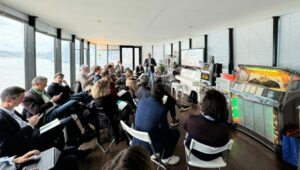Géraldine Thiry, ICHEC: beyond growth, what macroeconomic model? – June 2023
By: Lesley Brown
Share This Post
Categories:
Tags:
Géraldine Thiry, ICHEC: beyond growth, what macroeconomic model? – June 2023
In June 2023, to open the first session of its series on post growth, Futura-Mobility met with Géraldine Thiry, professor at ICHEC Brussels Management School and future director of the National Bank of Belgium (BNB). In her three-part presentation, she analysed the challenges of a post-growth economy, as well as focusing on the donut theory and its implementation in the Brussels-Capital Region since 2020.
Futura-Mobility: Why the need to transition towards a post-growth economy?
Géraldine Thiry: Firstly, GDP growth is slowing up. From 1951 up until now, there has been a downwards trend in average annual GDP growth per capita. This is apparent in Belgium, Germany, France, the US…. This phenomenon, which some call ‘secular stagnation’, demonstrates how growth rates as we used to know them, especially during the post war boom, are dwindling.
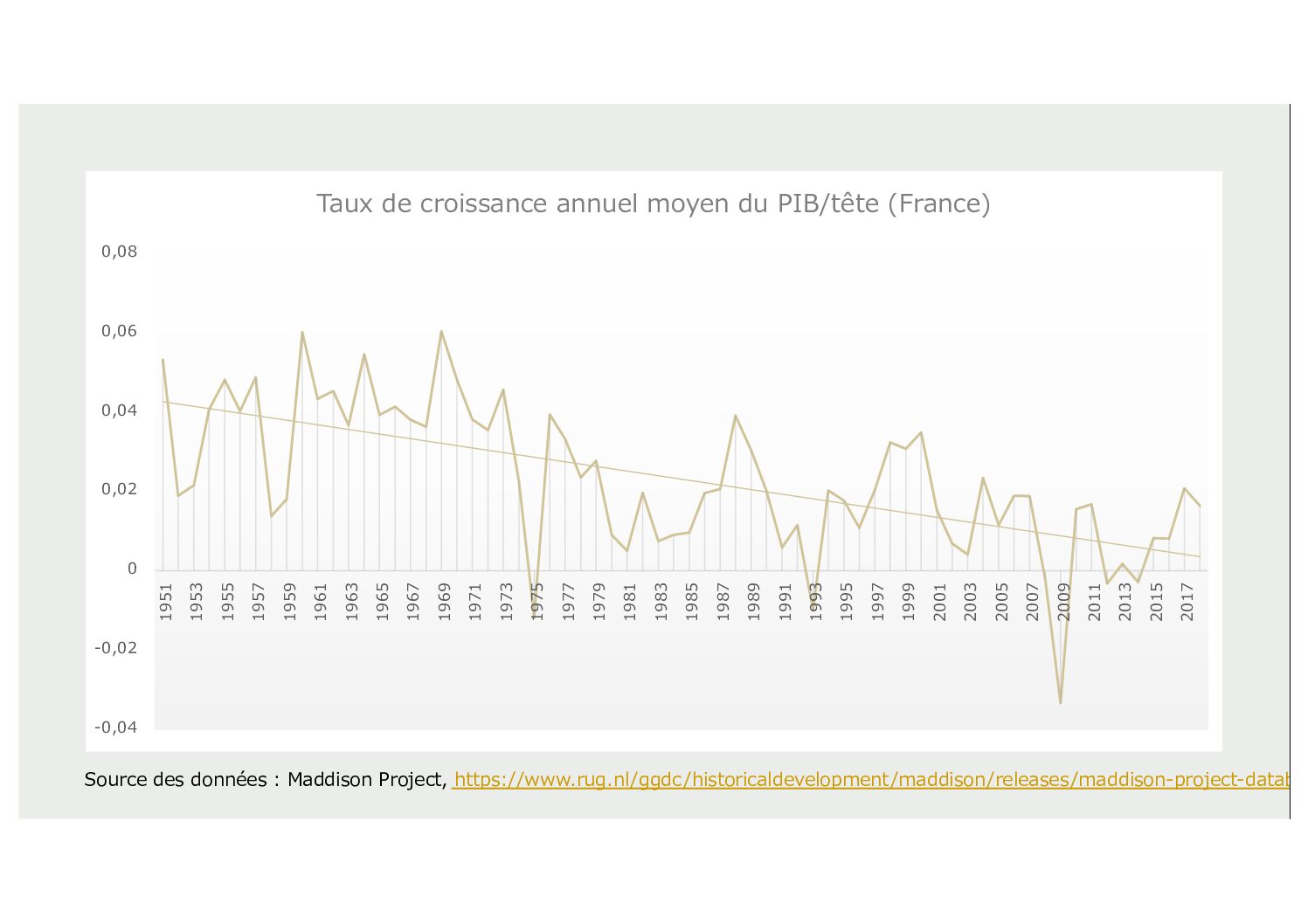
A second significant finding is that today no country is able to perform on both the social and ecological dimensions. This observation leads us to the concept developed in the book Doughnut Economics: 7 Ways to Think Like a 21st-century Economist [2017]. Its author, the economist Kate Raworth, explores how to enter what she calls ‘this space that is just and safe for humanity’ between the social threshold and the environmental threshold.
This doughnut is made up of two concentric circles. The outer circle represents the ecological threshold, ecological-related limits which, when transgressed, put humanity at systemic risk. The inner circle represents the social threshold, a set of limits linked to human rights, like political representation, gender equality, social bonds, access to energy, quality education, electricity, quality housing, and so forth. According to doughnut economics, in a society worth living in, nobody should fall under these thresholds. So nobody should fall ‘into the hole’ of the doughnut.
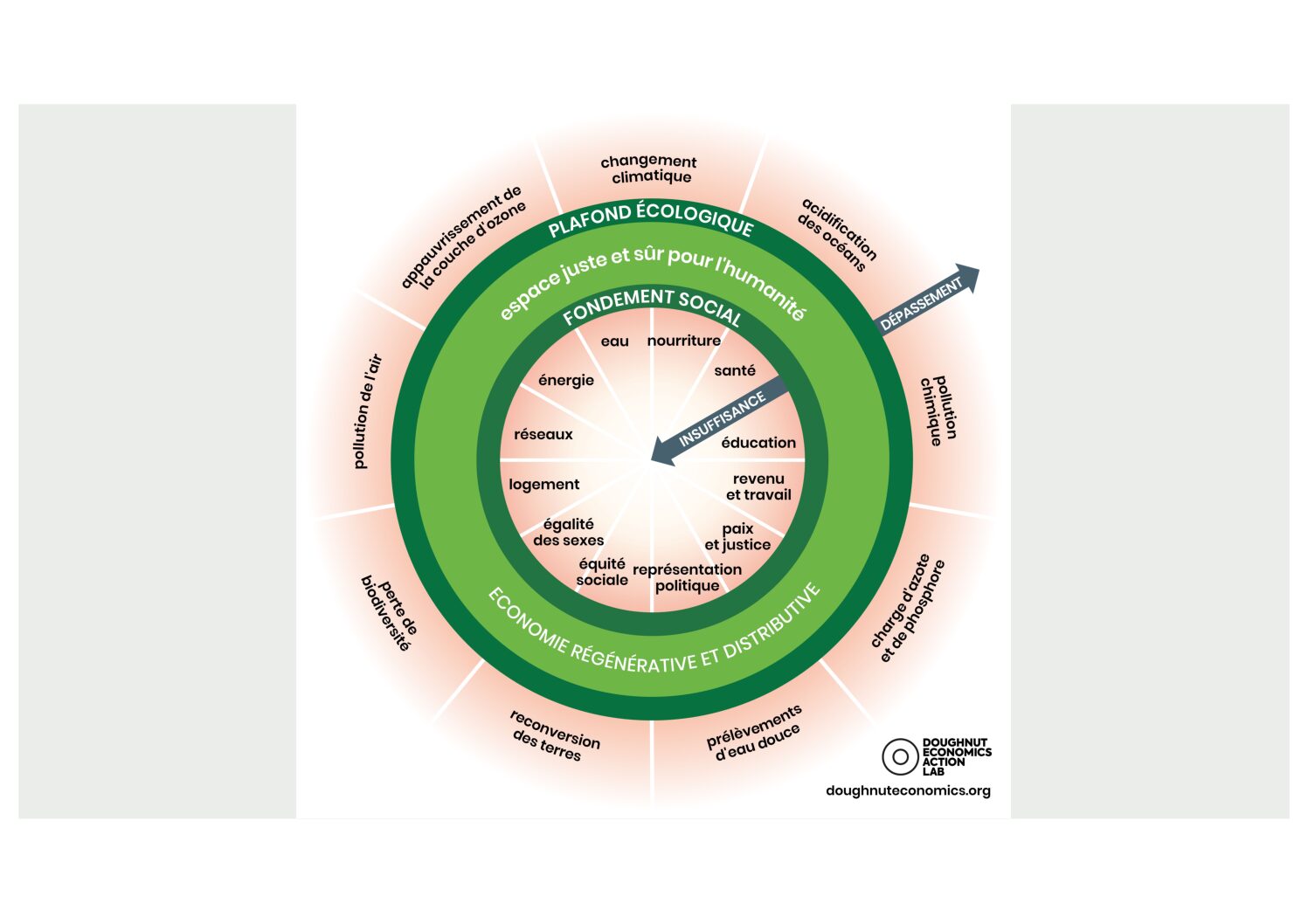
So ideally we need to reach maximum social thresholds while transgressing minimum physical thresholds. But work by Leeds University shows that today, unfortunately, no country is succeeding in doing this.
This leads to my third observation: we are all, every country, at a turning point. Our energy dependency has heightened. We depend on energy that is harmful in several respects. We have also become aware of our geostrategic dependency, of our climate vulnerability. This twofold vulnerability raises two questions: do we really still have the resources today for our prosperity? Do we have a stable and healthy environment in which to deploy this prosperity?
At this turning point, the feeling of urgency together with the lack of a long-term vision can lead to ‘false good’ ideas. In this respect, for instance, when petrol prices rocketed in 2022, the French government introduced a fuel rebate of 30 centimes/litre. This measure, despite being potentially well intentioned, proved anti-redistributive since the owners of big cars benefitted the most. Furthermore, it isn’t a reform that is structurally going to change the way people travel around.
This decision was taken quickly, under social pressure and is totally understandable. Yet it failed to deliver the desired effects and certainly isn’t a lasting solution from a sustainability perspective.
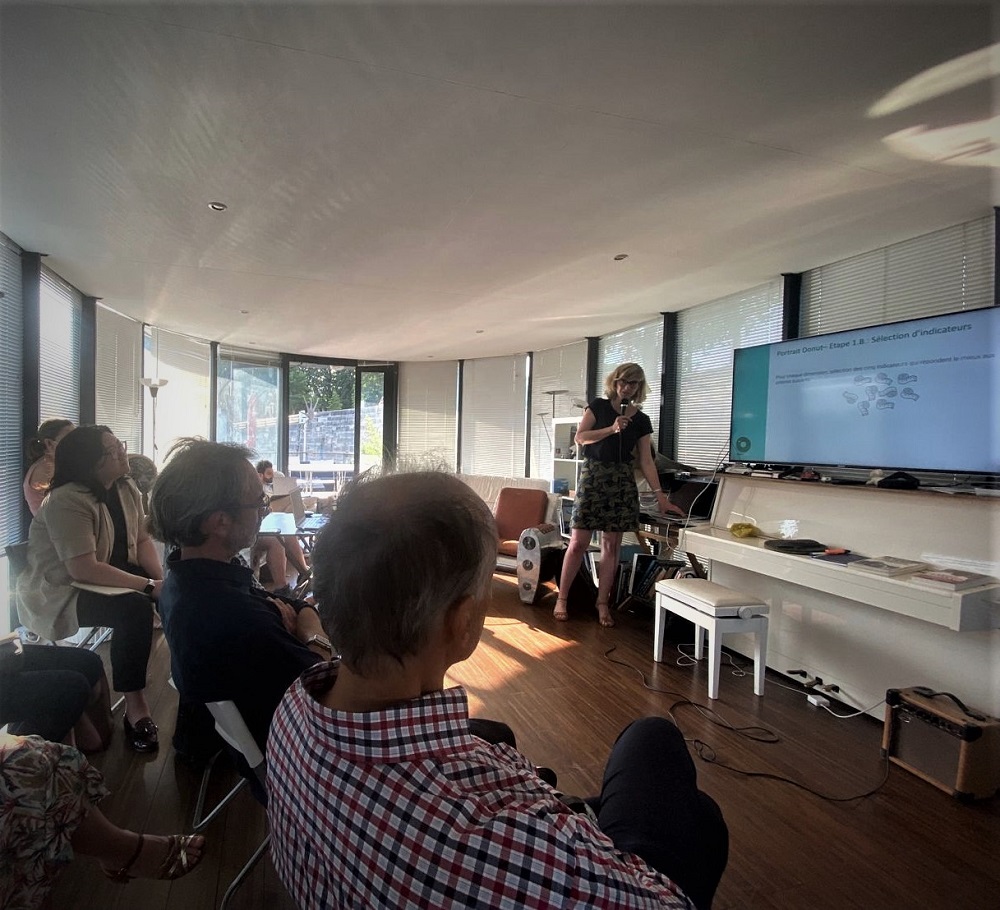
My fourth finding concerns the issue of decoupling. Generally speaking, how the tech-optimist and post-growth scenarios [prospective scenarios for 2050 imagined by Futura-Mobility] differ is in their position on this notion of decoupling.
Decoupling is achieved when the negative environmental impacts, like greenhouse gas emissions, energy or material consumption, decrease, while the GDP per capita goes up.
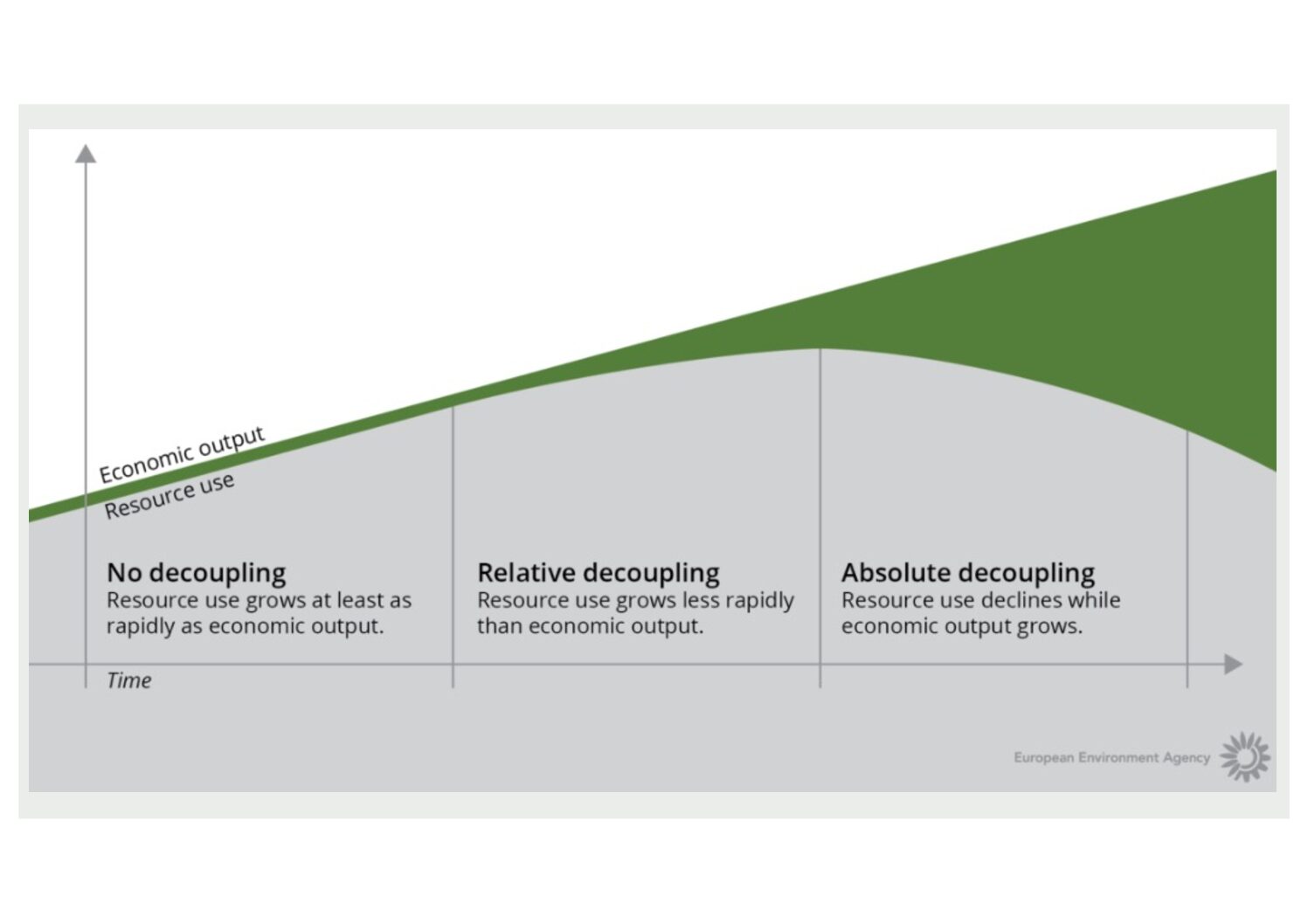
FM: Where are we at today with regards decoupling and what role does it play in view of a post-growth economy?
GT: Decoupling has become an extremely acute and important issue.
In Europe, at the end of the 1970s, after reaching a peak in greenhouse gas emissions – in CO2 equivalent per year – there was a slight decrease in emissions. So this showed relative decoupling: fewer greenhouse gas emissions for each point of GDP growth.
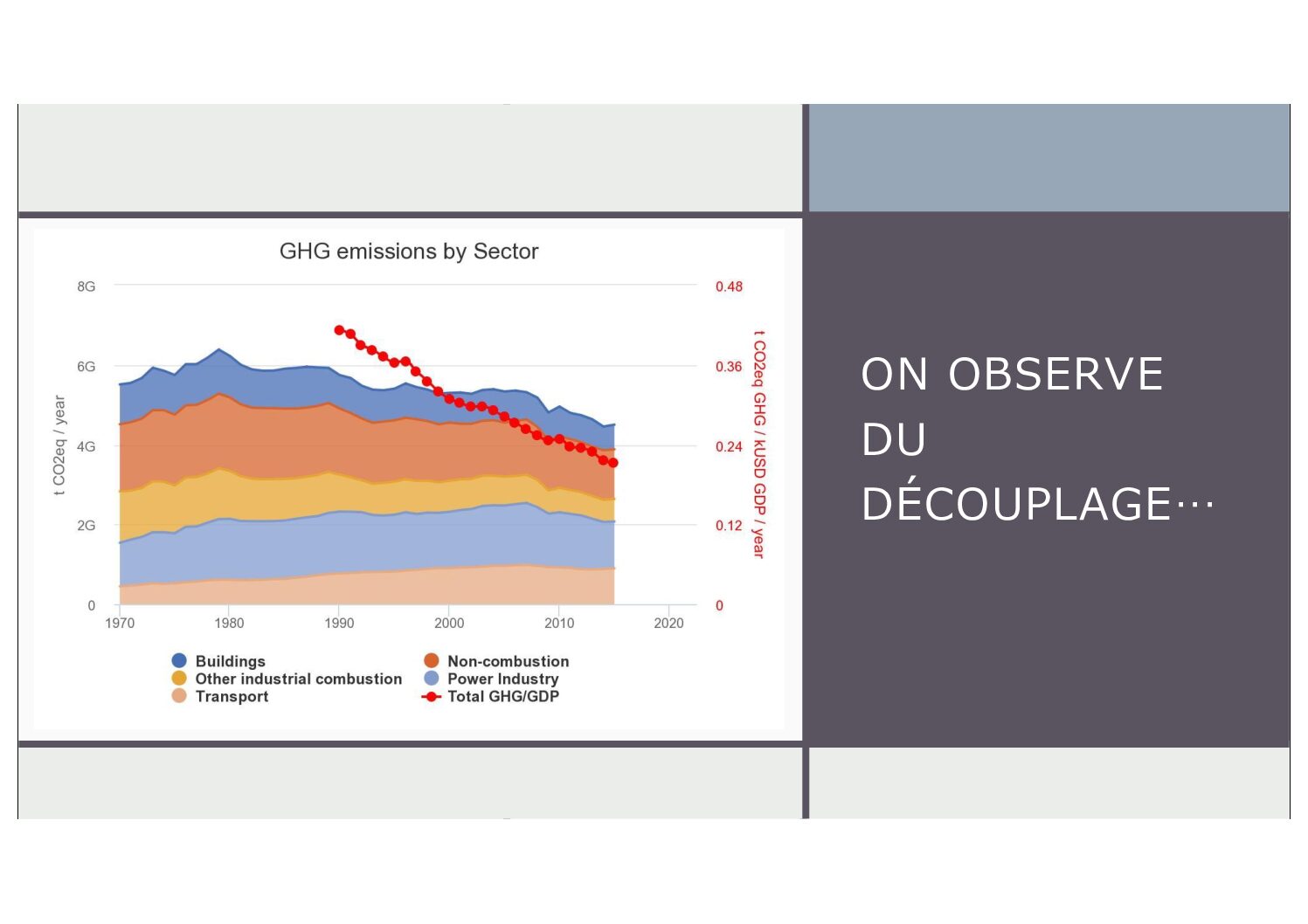
Absolute decoupling, i.e. a reduction in absolute terms (not just in relation to GDP growth) has also been observed in CO2 emissions produced at the same time as GDP growth in 24 countries, including France.
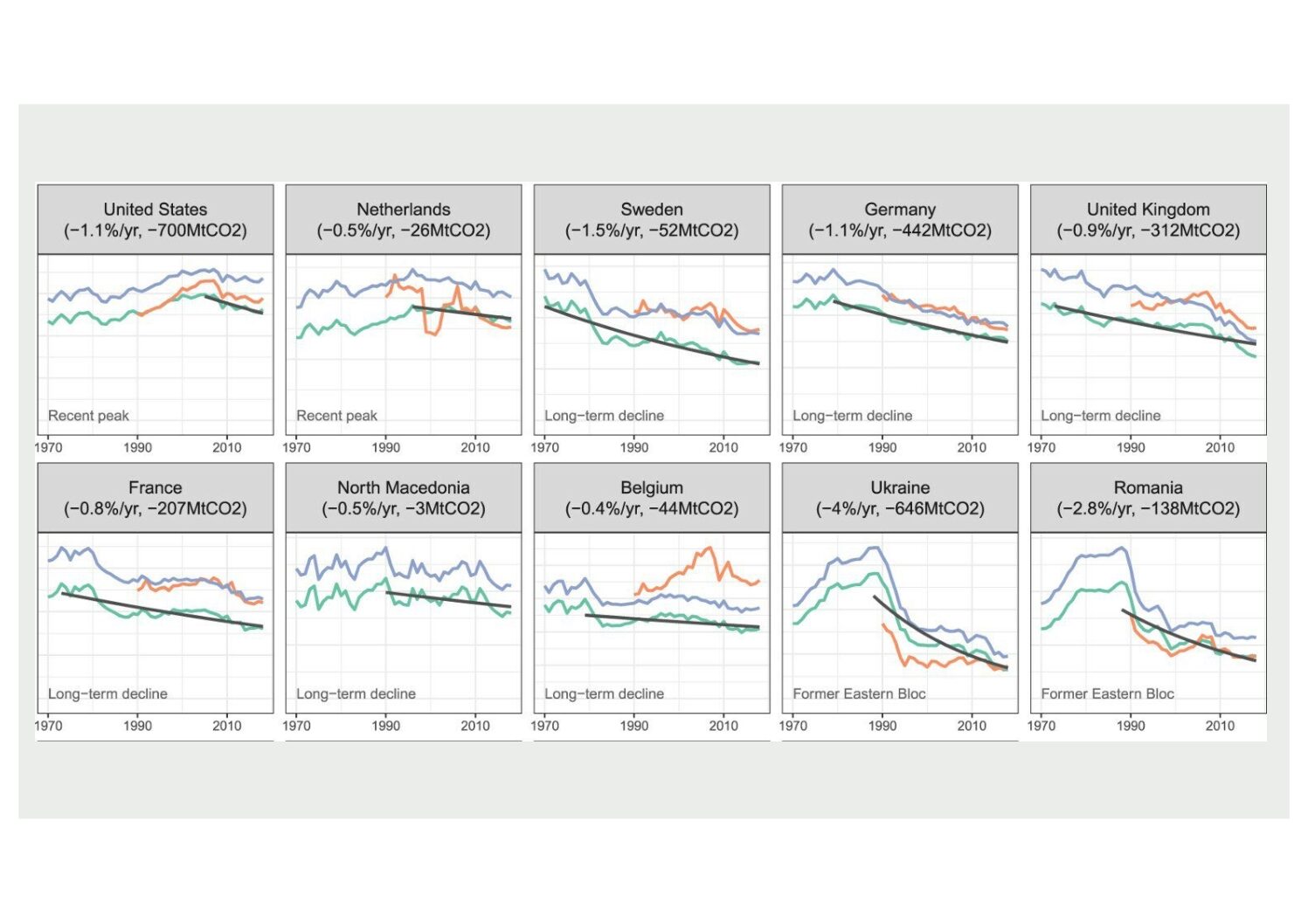
But the decoupling for these 24 countries only concerns CO2. Yet in the doughnut, there are a set of planetary boundaries. Consequently, it may be that this decoupling for C02 is happening at the expense of major rebound effects, or of adopting technologies that are going to accentuate the problem of depletion of rare earth metals, for instance. So it’s clear there are systemic stakes at play that aren’t shown in this graph for the decrease in CO2. This wager on decoupling is based on huge optimism about technology and especially unprecedented growth in energy efficiency, where caution is advised. For instance, we can see that the ratio between the quantity of renewable energy produced vs the quantity of energy required to produce it (EROI) is decreasing… which isn’t a step in the right direction. It’s not a question of opposing the two approaches, but of keeping this optimism in proportion in the light of impacts currently observed for these technologies and putting technology in its proper place.
Furthermore, decoupling needs to be observed at global level. Worldwide, we’re definitely seeing relative decoupling, so GDP growth in a context of better energy efficiency, but not absolute decoupling (outside of the 24 countries concerned). So emissions are still increasing at the worldwide level. Europe is capable of decoupling… yes, but this is also linked to a kind of delocalisation of its carbon footprint.
Finally, to achieve carbon neutrality by 2050, the rate for decreasing CO2 emissions needs to be 7.6% a year (according to the UNEP). Yet the paces of decoupling we’re currently seeing aren’t fast enough and run the risk of not getting us to our climate ambitions. In the 24 countries with absolute decoupling, the pace varies from -0.4% (Belgium) to -4.1% (Greece).
So decoupling on its own may not suffice.
FM: Are there other avenues that can be taken in parallel for this transition towards a new economic model?
GT: In the latest IPCC report, for the very first time there is a clear call to no longer focus solely on the offer, on the productive fabric and adapting production methods, whatever the sector, but to also tackle demand, i.e. lifestyles changes. To succeed here, given the obstacles to be encountered when changing regular practices, there is a need for tools, for a coherent approach to frame, support and orientate such changes.
We’re probably going to have to limit production, in any case we can’t depend solely on technology, even though it’s extremely important. This technology change must form part of lifestyle changes that go structurally and culturally much deeper.
FM: Could doughnut economics trigger this transition?
GT: Adjusting the ways we produce and consume implies decreasing or slowing down the activities of certain sectors. This also means not only thinking innovation, which is vital, but also ‘exnovation’ for certain sectors.
The strategic review of the European Central Bank is consistent with this idea. It is starting to work on the issue of financing some carbon-based activities and recognises that certain business segments are little by little going to have to transition to other types of activity.
Given these findings, I think the doughnut, no longer as a visual representation, but as an economic, philosophical, and cultural approach, could be interesting.
FM: What tangible changes are needed, according to doughnut economics, to rebuild the economy?
GT: The first principle is to change the objective. Let’s stop aiming for GDP growth and ensure we manage to perform well on all the social and ecological dimensions, while respecting global boundaries.
In her 2nd principle, Kate Raworth invites us to modify our representation of the economic system as a whole, by remembering its very deep dependence on physical elements – which is not the case for most economic models today – and rethinking the role of stakeholders and the common good within the economy. To sum up, if we rethink the economy, we also need to think about putting everyone in their proper place.
The 3rd principle challenges the extremely powerful image of economic man and encourages us to nurture human nature. We need to tone down this image of a rational homo economicus and, above all, realise that we are also social beings and not just driven by rational egoism.
The 4th change we should make, according to Kate Raworth, is to try to view the economic system through the prism of dynamic complexity with feedback systems, like in natural ecosystems where we can observe and analyse the phenomena of cycles amplifying or contracting. Markets have revealed they are not as self-regulating as neoclassical economics would have us believe. This was the case during the crises of 1929 and 2008, when the markets did not self-regulate but instead created a chain of imbalances.
At the heart of the economic system are companies, organisations, and the productive fabric. The 5th and 6th doughnut principles call for a redesign of the productive system, a fundamental review of the way our businesses and productive organisations are structured to make them less unequal, and more regenerative and circular. In fact, in the regions of the world where GDP has grown, the concentration of income in the hands of the richest 10% has only increased. So the fact is that growth is no longer sufficient to reduce inequality. Something else must be done.
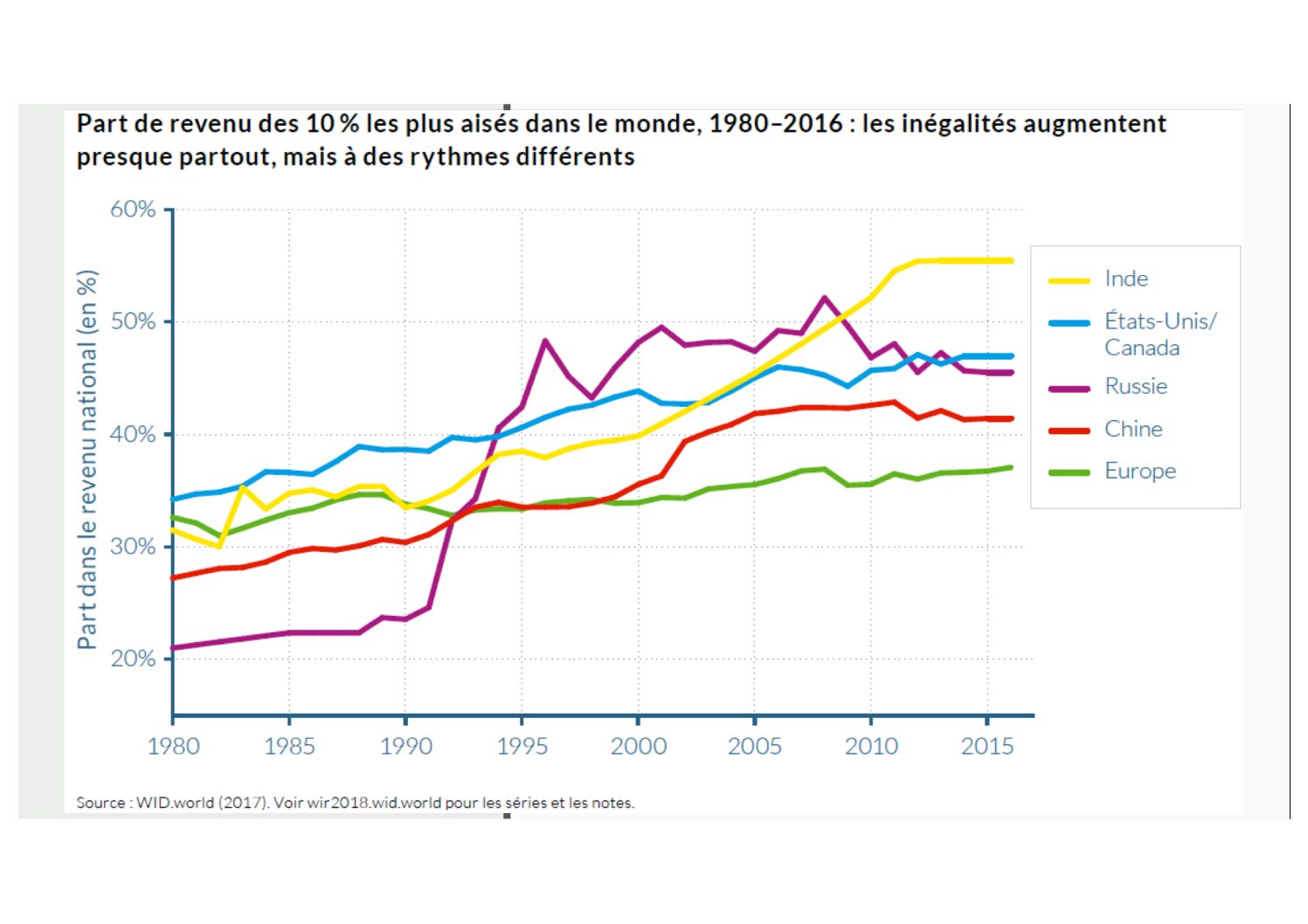
The 7th and final principle of doughnut economics invites us to be agnostic when it comes to growth. On this point, it’s not about being for or against growth, but simply managing to make our production systems non-dependent on growth. It’s a huge task and we’ve got a long way to go.
FM: Tell us about the experiment to implement doughnut economics in Brussels in 2020.
GT: It was an experiment in the Brussels-Capital Region to apply the main principles of doughnut economics. The project was carried out as a team with ICHEC Brussels Management School, the Donut Economics Action Lab, the international doughnut platform, and ASBL Confluences, a not-for-profit organisation specialising in citizen participation. Initially, the doughnut was conceived at a global level. So there were a lot of challenges in putting it to the test in an area like the Brussels-Capital Region. ‘Doughnut’ thinking on a regional scale meant considering both the well-being (social and ecological) of inhabitants and the impacts of the production and consumption patterns of Brussels residents on other parts of the world. This is why we added a local-global dimension to the ecological-social dimension.
Our team of researchers at ICHEC focused on the quantitative part of the project. We attempted to create a ‘doughnut portrait’ of the city of Brussels. For each dimension of the doughnut (political representation, gender equality, social cohesion, access to energy, quality education, electricity, quality housing, etc), we selected five indicators that we considered relevant. The work was carried out as transparently as possible. At the end of this quantitative part, we are delivering an adaptable tool that political authorities, administrations, or institutes, Brussels Institute of Public Statistics in particular, could use as a compass to guide their action.
The other side of the team, from ASBL Confluences, focused on the ‘dough’ of the doughnut, with this question in mind: how can we help the stakeholders in Brussels (public administrations and businesses) get into this ‘dough’? The team ran a series of doughnut workshops to encourage companies and public authorities who want to review and question their objectives, governance, ownership (who their shareholders are), sources of funding, and the networks where they operate. The aim was to identify, with the organisations themselves, where there is room for manoeuvre to make the company more regenerative and redistributive, and where there are barriers to such change. These doughnut workshops revealed that companies often find themselves stuck in a set of constraints (recyclability of packaging versus consumer behaviour, for instance).
FM: How do you see tomorrow’s economy?
GT: From a philosophical viewpoint of the economy, I think we need to shift from a conquest economy to a ‘conciliatory’ economy based on the principles of distribution rather than growth, on sufficiency rather than optimisation, and on the idea of taking care of ourselves and others, and of nature, rather than on exploitation (the extractive economy).
The Covid pandemic brought this home to us: for years we had been outsourcing our value chains on the principle of economic efficiency, without realising we had rendered our production systems more vulnerable. They are not sufficiently localised or resilient to long-term shocks.
In this conciliatory economy, rather than staying focused solely on the value of effectiveness and economic efficiency, value pluralism would be accepted.

